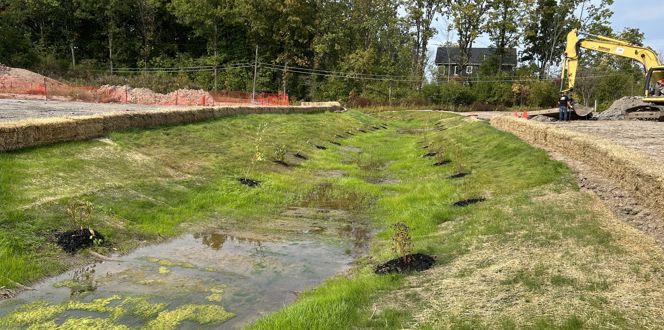Private Residence In Kenmore, WA
Davey Resource Group used sonic tomography to determine if a Douglas Fir on a residential property in Kenmore, WA would pose as a safety risk for nearby homes after showing signs of a fungi infestation.
Project Narrative
Davey Resource Group, Inc. (DRG) was contacted to assess a douglas-fir (Pseudotsuga menziesii) with evidence of Phaeolus schweinitzii, a common root and butt rot fungi. The presence of the fungi could make the tree more susceptible to windthrow, and the client was concerned the tree could fail and cause damage to nearby homes. Through collaboration with Dr. Thomas Whitney of the Davey Institute, DRG arborists performed a Level 3 Tree Risk assessment and provided a report detailing their findings.
Determining Tree Health Through Sound Waves
Sonic Tomography (ST) was selected as the preferred strategy for evaluating the extent of any decay in the lower portion of the trunk. ST is a technology that utilizes sound waves to detect decay or cavities inside aboveground woody tree parts, such as trunk and scaffold limbs. It analyzes and displays the speed of sound traveling through healthy versus decayed wood. Sound travels faster in solid wood than in decayed wood or cavities. This differential velocity is captured by several points around the circumference from sounding waves generated at each point. The data are then displayed in an image that depicts the extent of decayed wood or illustrates the presence of cavities.
The two-person team of arborists completed a three-tier scan—(1) at ground level, just above the fruiting body; (2) at two feet from grade; and (3) at five feet up from the base. The results of the effort confirmed that the tree had sufficient sound wood and a low risk of failure within a three-year timeframe. With traditional visual inspections, the presence of P. schweinitzii fruiting bodies can often be sufficient evidence to condemn a tree. However, the owners had hoped to keep their tree, and the results of this effort provided the tree owners with confidence that the tree could be retained and monitored.





